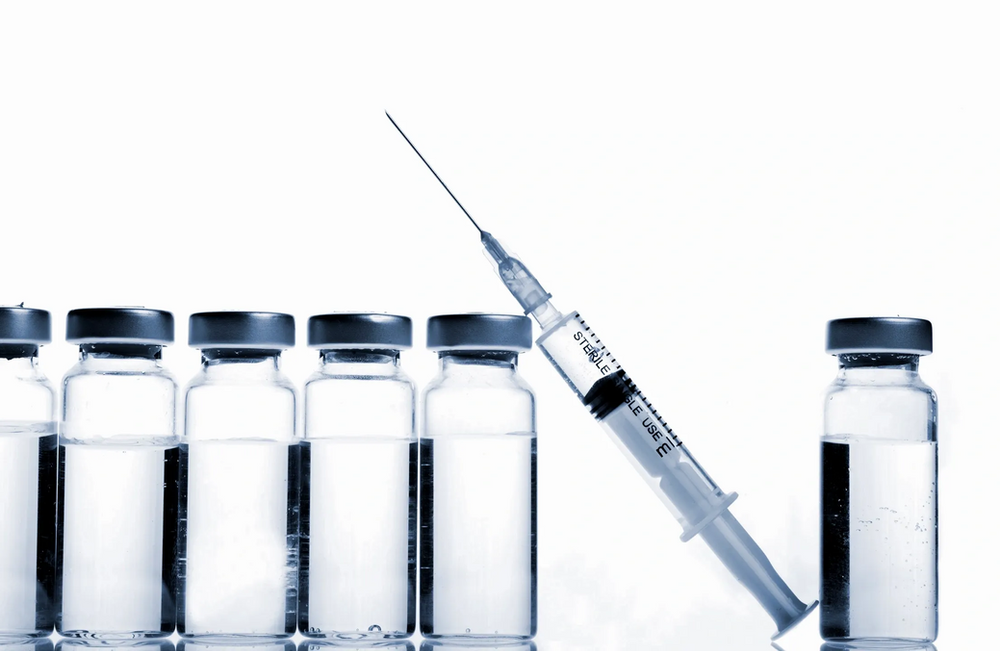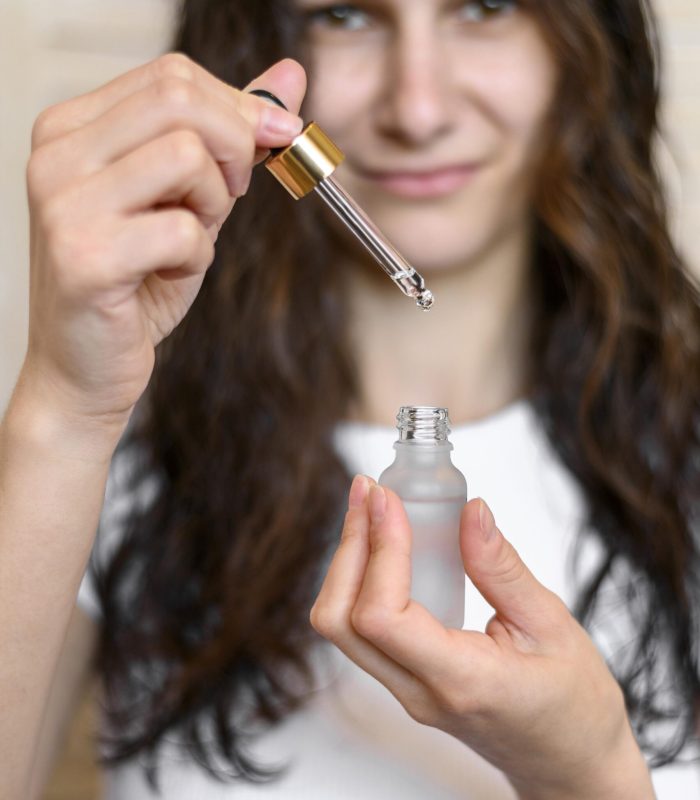- Colorado Springs, CO
- [email protected]
- 123-456-7890
- 123-456-7890
Bioregulators are designed to support the function and health of targeted organs or systems by promoting protein synthesis, cellular repair, and regeneration. They are often used as part of a holistic approach to wellness to help maintain the balance and optimal functioning of the body.

“Sickness takes time. Recovery also takes time. Let’s commit to taking this journey back to your optimal health together.”
Dr. Lindgren
Peptides have been a hot topic in the wellness space for as long as I can remember. By definition, a peptide is a sequence of amino acids which is more than two but less than 49. Once you hit 50 amino acids, we call it a protein. Just some semantics. Anyway, traditionally used peptides (CJC-1295, Ipamorelin, BPC-157) are what I will refer to as ‘signaling peptides.’ Thes are tiny molecules that bind to receptors on the outside of cells which then initiate a cascade of events inside the cell. The pathways that get turned on are already in place. Unlike hormones and medications, signaling peptides aren’t overriding your natural physiology – they are just enhancing it. Very cool. Most of these peptides are similar to or exact replicas of peptides your body produces.

The FDA hates peptides. You can rabbit hole on reasons for that if you would like, but at the end of the day, the pharmaceutical industry is in the market of producing medications for profit. Peptides aren’t medications and the ones they dislike cannot be patented. They are simple to synthesize and come with few if any potential side effects or contraindications. Nevertheless, the FDA made good on its promise to effectively ban signaling peptides in the fall of 2023. They moved the most used peptides to the ‘category 2’ list, which is their designation for ‘potential harm’ – although they did not state any harms data. You know, like when they pulled Vioxx from the market for causing strokes. They basically said these aren’t studied, they don’t work, they might cause harm, so don’t use them.
Peptides are still readily available on the so-called black market because anyone with a science degree and a synthesizer can make them. That of course calls into question safe manufacturing practices, potency, and sterility concerns. I am still a huge supporter of peptides, but accessing safe products requires knowing the right people behind their production – and an understanding of how our regulatory agencies feel about them in general.
Peptide bioregulators are different than signaling peptides. First, the FDA considers them dietary supplements and not ‘biologics’ like injectable peptides. So, they’re not standing in the way of product availability. Second, peptide bioregulators are extremely small – two or three amino acids in length. They play a crucial role in regulating various physiological processes all throughout the body. Dr. Vladimir Khavinson, a renowned scientist in the field of bioregulation, has extensively researched and developed these peptides, demonstrating their potential in promoting health and longevity. Let’s take a look at how bioregulators work and how they differ from more conventional signaling peptides.

Recall that signaling peptides work by targeting specific receptors found on the outside of cells. Peptide bioregulators function by modulating gene expression, thereby influencing the synthesis of proteins essential for various cellular functions. Unlike traditional peptides that may act on receptors or signaling pathways, bioregulators directly interact with the DNA in the cell nucleus. This interaction leads to the activation or repression of specific genes, resulting in the production of proteins that can repair damaged tissues, enhance cellular function, and restore homeostasis.
You are a victim of your parents in so far as you received half of your DNA from your mom and half from your dad. The human genome contains approximately 25,000 genes. These genes are responsible for coding the proteins that carry out various functions in the body, as well as regulating other important biological processes. But not all these genes are ‘turned on.’ There are marks on your DNA (methylation patterns) that tell your body which genes to transcribe into proteins and which ones to leave alone. The expression (or lack thereof) of these genes is referred to as ‘epigenetics’. Unless you own a CRISPR machine, you cannot change your DNA. But you can change how and which genes are actively being transcribed by manipulating these methylation sequences. This is how peptide bioregulators work.
Dr. Khavinson’s research has identified numerous applications for peptide bioregulators, particularly in age-related diseases and conditions. Some key areas of application include:
Anti-Aging & Longevity: Peptide bioregulators have shown promise in extending lifespan and improving overall health in aging populations. They help maintain the structural integrity and function of various organs and tissues.
Neuroprotection: These peptides have been found to enhance cognitive function and protect against neurodegenerative diseases like Alzheimer’s and Parkinson’s by promoting neuronal survival and reducing inflammation.
Immune System Support: Peptide bioregulators can boost the immune system, enhancing the body’s ability to fight infections and recover from illnesses.
Tissue Regeneration: They aid in the repair and regeneration of tissues, making them valuable in treating injuries and degenerative conditions.

There are 21 different peptide bioregulators targeting different glands and organ systems. Unlike signaling peptides which are typically given via subcutaneous injection, bioregulators are taken by mouth. Dr. Khavinson’s protocols were always in ‘stacks’ of 3, 4, or 5 bioregulators. Taking less is certainly acceptable, but there is no data on using more than 5 at one time. Here are some examples of commonly used bioregulator stacks.
Men’s Stack (decreased nighttime urination,
improved erectile function)
Circulatory
Testes
Prostate
Women’s Stack (endometriosis, irregular menses,
improved fertility)
Circulatory
Pineal
Ovaries
Kidney Function
Circulatory
Renal
Bladder
Detoxification
Circulatory
Liver
Renal
Weight Loss
Circulatory
Thyroid
Pancreas
Stomach/Leaky Gut
Circulatory
Thyroid
Stomach
Joint Inflammation
Circulatory
Cartilage
Thymus
Anti-Aging
CNS
Pineal
Thymus
Autoimmunity
Circulatory
Thymus
Pineal
Target organ bioregulator
Neurodegenerative Disease (Alzheimer’s, Parkinson’s, TBI, long Covid “brain fog”, memory loss)
Circulatory
Pineal
CNS
Dr. Khavinson almost always used the ‘Circulatory’ bioregulator as a base under the premise that improved blood flow would improve target organ tissue penetration.
Bioregulators are typically used in a pulsatile fashion, meaning you don’t take them every day for the rest of your life. A typical start up cycle is two capsules of each bioregulator daily for 30 days followed by 2 capsules daily for 10 days for 3 consecutive months. And that’s it! Sixty total days is a typical first cycle. A second cycle is usually done the following year by taking 2 capsules daily for 10 days in the early part of the year, another 2 capsules daily x 10 days mid-year, and a final 2 capsules daily x 10 days in the latter part of the year.
Bioregulators aim to ‘heal’ their target – not bandage it. I never recommend anything I haven’t used myself, and I can personally attest to their benefit. I realize I am an N of one, but my personal results with bioregulators have been nothing short of miraculous. As a young person, I did a lot athletically. As a result, I did a lot of damage to my joints. I bet I was prescribed maximum doses of ibuprofen for close to 10 years. My kidneys were shot. We measure kidney or renal function using something called glomerular filtration rate, or GFR. The ideal GFR is greater than 80. Mine was in the low 50s. That’s also called ‘stage 3 chronic kidney disease’ and I had it for years. Last year I took the Kidney bioregulator stack for 30 days followed by 10 days a month x 3 months. My GFR measured three separate times this year was 82. True story.

Peptide bioregulators represent a promising medical science frontier, offering potential therapeutic benefits for many conditions, particularly those associated with aging and chronic diseases. Dr. Khavinson’s pioneering work has laid the foundation for understanding how these peptides can be harnessed to improve health and longevity, distinguishing them from conventional signaling peptides through their unique mechanism of action at the genomic level. As research continues, the potential applications of peptide bioregulators are likely to expand, offering new avenues for disease prevention and treatment without the potential for side effects or drug interactions.
Up until very recently, we just couldn’t get bioregulators in the US. That has changed. We are finally able to source Khavinson’s natural bioregulators which are encapsulated in the UK, Ireland, or Denmark. I am pleased to announce that we now carry them right here at Lindgren Functional Medicine.
Towards realization of longer life
Vladimir Khavinson, Irina Popovich, and Olga Mikhailova, 2020
https://www.ncbi.nlm.nih.gov/pmc/articles/PMC7716987/
Peptide Regulation of Gene Expression: A Systematic Review
Vladimir Khatskelevich Khavinson, Irina Grigor’evna Popovich, Natalia Sergeevna Linkova,Ekaterina Sergeevna Mironova, and Anastasiia Romanovna Ilina, 2021
Neuroepigenetic Mechanisms of Action of Ultrashort Peptides in Alzheimer’s Disease
Anastasiia Ilina, Vladimir Khavinson, Natalia Linkova, and Mikhael Petukhov, 2022
https://www.ncbi.nlm.nih.gov/pmc/articles/PMC9032300/
Peptides: Prospects for Use in the Treatment of COVID-19
Vladimir Khavinson, Natalia Linkova, Anastasiia Dyatlova, Boris Kuznik, and Roman Umnov, 2020